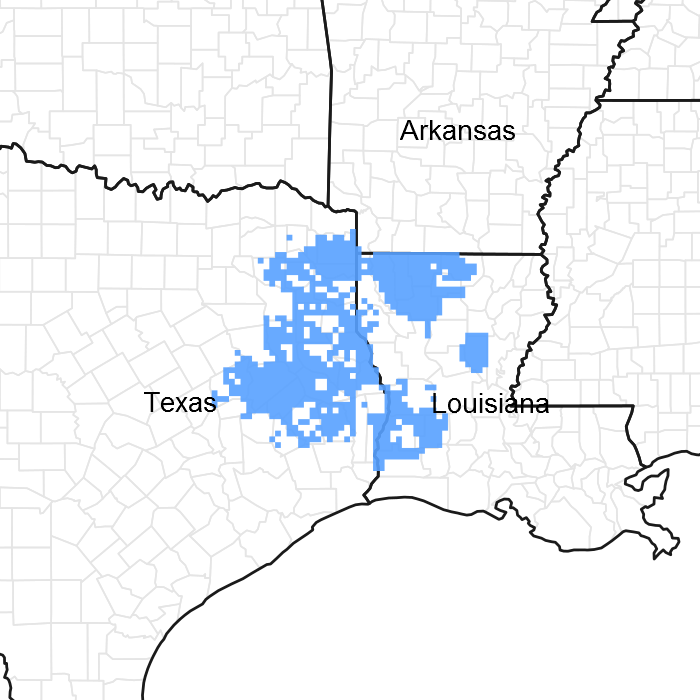
Natural Resources
Conservation Service
Ecological site F133BY011TX
Deep Sandy Terrace
Last updated: 9/21/2023
Accessed: 12/21/2025
General information
Provisional. A provisional ecological site description has undergone quality control and quality assurance review. It contains a working state and transition model and enough information to identify the ecological site.

Figure 1. Mapped extent
Areas shown in blue indicate the maximum mapped extent of this ecological site. Other ecological sites likely occur within the highlighted areas. It is also possible for this ecological site to occur outside of highlighted areas if detailed soil survey has not been completed or recently updated.
MLRA notes
Major Land Resource Area (MLRA): 133B–Western Coastal Plain
Major Land Resource Area (MLRA) 133B, Western Coastal Plain is in eastern Texas, western Louisiana, and the southwest corner of Arkansas. The area is dominated by coniferous forest covering 45,450 square miles (29,088,000 acres). The region is a hugely diverse transition zone between the eastern deciduous forests and the central grasslands to the west.
Classification relationships
USDA-Natural Resources Conservation Service, 2006.
-Major Land Resource Area (MLRA) 133B
Ecological site concept
The Deep Sandy Terrace site has deep sandy soils with little horizon development. This, coupled with their position on terraces, form the unique plant communities.
Associated sites
| F133BY008TX |
Northern Deep Sandy Upland Sites are on a higher landscape position and have more clay content in the subsurface horizons. |
|---|---|
| F133BY009TX |
Southern Deep Sandy Upland Sites are on a higher landscape position and have more clay content in the subsurface horizons. |
| F133BY010TX |
Very Deep Sandy Upland Sites are on a higher landscape position. |
| F133BY012TX |
Wet Terrace Sites have poor drainage patterns and are overall wetter. Associated plant species are able to withstand prolonged wetness. |
| F133BY013TX |
Terrace Sites have more associated clay content resulting in more robust vegetative communities. |
| F133BY014TX |
Creek Bottomland Sites are on a lower landscape position in bottomlands. Sites flood and have vegetation more associated with wetness. |
| F133BY016TX |
Sandy Bottomland Sites are in a lower landscape position in bottomlands. Sites flood regularly and have vegetation associated with wetness. |
Similar sites
| F133BY009TX |
Southern Deep Sandy Upland Sites are on a higher landscape position and have more clay content in the subsurface horizons. |
|---|---|
| F133BY010TX |
Very Deep Sandy Upland Sites are on a higher landscape position. |
| F133BY013TX |
Terrace Sites have more associated clay content resulting in more robust vegetation communities. |
Table 1. Dominant plant species
| Tree |
(1) Quercus incana |
|---|---|
| Shrub |
Not specified |
| Herbaceous |
Not specified |
Click on box and path labels to scroll to the respective text.
Ecosystem states
| T1A | - | Fire suppression, no management |
|---|---|---|
| T1B | - | Clearcut, site preparation, tree planting |
| T1C | - | Clearcut, grass/crop planting |
| R2A | - | Selective timber harvest, prescribed burns |
| T2A | - | Clearcut, site preparation, tree planting |
| T2B | - | Clearcut, grass/crop planting |
| R3A | - | Gap-phase regeneration or clearcut with tree planting |
| T3A | - | Clearcut, no management |
| T3B | - | Clearcut, grass/crop planting |
| R4A | - | Tree planting, mid-story shrub control, prescribed burns |
| T4A | - | Fire suppression, no management |
| T4B | - | Clearcut, site preparation, tree planting |